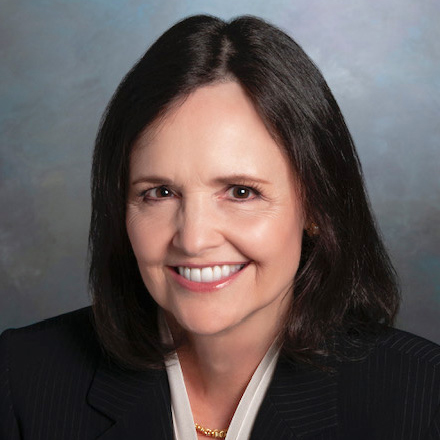But the rhetoric does not match the reality. When Treasury Secretary Robert Rubin calls for stronger government regulation of global finance or President Clinton intones about having to temper “the unruly energies of the global economy,” they are not proposing a new Bretton Woods agreement. They are not talking about restoring a fixed-exchange rate system to provide a stable monetary foundation for international trade, much less considering an international monetary system anchored by a dollar convertible into gold. They are merely invoking the powerful imagery of that conference to underscore the seriousness of their intent to protect the world from what they view as the excesses of runaway capitalism.
It makes no sense, though, to talk about redesigning the financial architecture without first dealing with the more fundamental problem of defining a monetary standard for measurement. What is the global unit of account for signaling value across borders? How can you expect sound investment flows and a high-performance global economy in the absence of a rational international monetary regime? At a time when developing nations are opting to withdraw from the global economy and abandon free-market capitalism rather than be further victimized by currency chaos, Messrs. Clinton and Rubin can ill afford to avoid these questions.
For all the barbs hurled at Indonesia and South Korea for indulging in “crony capitalism,” and despite the harsh criticism leveled at Japan for not sufficiently stimulating its economy through government spending, the current economic crisis is largely the result of a world monetary system that has utterly broken down. Price signals are distorted by gyrating currencies that create a house-of-mirrors atmosphere for asset valuation, leaving investors without an accurate reflection of global economic opportunity and risk. Misdirected capital flows and economic dislocations stem from distorted perceptions about the relative returns from seemingly productive investment projects.
The Clinton administration’s wish list for improving the financial workings of the global economy includes such reforms as “increased transparency,” tighter government surveillance of financial activities and additional resources for the International Monetary Fund. Steps have also been taken to bump up government loan guarantees and strengthen the social safety net with financing from the World Bank. These objectives are in keeping with the view that the same Keynesian mechanisms that serve to “tame the cycles of boom and bust” in the domestic economies of advanced nations should be implemented on a global scale. But they have dubious merit if the goal is to perpetuate democratic capitalism around the world. What the world really needs is global monetary reform similar to what was set out at Bretton Woods, N.H., in 1944.
That conference was the culmination of a planning process begun more than two years earlier. Treasury Secretary Henry Morgenthau asked his assistant Harry Dexter White to prepare a paper outlining the possibilities for coordinated monetary arrangements among the U.S. and its allies; ideally, the plan would evolve into a postwar monetary system based on an “international currency.” The request was made at 2 a.m. on Dec. 14, 1941—one week after the attack on Pearl Harbor.
White responded with a draft proposal emphasizing that the primary goal should be to stabilize the exchange rates of the Allied countries in order to encourage the flow of productive capital: “The advantages of obtaining stable exchange rates are patent. The maintenance of stable exchange rates means the elimination of exchange risk in international economic and financial transactions. The cost of conducting foreign trade is thereby reduced, and capital flows much more easily to the country where it yields the greatest return because both short-term and long-term investments are greatly hampered by the probability of loss from exchange depreciation. As the expectation of continued stability in foreign exchange rates is strengthened there is also more chance of avoiding the disrupting effects of flights of capital and of inflation.”
White viewed protectionism as “World Enemy No. 1” in the economic sphere and argued that weaker nations needed reassurance that the future would not mean a return to the prewar “every nation for itself” pattern of competitive depreciation that led to economic chaos and widespread depression. A stable international monetary system would serve as the stepping stone away from “shortsighted disastrous economic nationalism” and provide the foundation for a more prosperous world.
Today we again face the problem of economic chaos and possible global depression. But instead of seeking to establish an orderly monetary system so free markets can function properly, our leaders are advocating complex regulatory schemes to enhance the role of government in private commerce. Mr. Rubin passed up the chance to press for international monetary reform last week, commenting only that whatever exchange rate regime a nation chooses—fixed or floating—the nation must be “committed” to it. Yet it is the prevailing do-your-own-thing approach to currency relations that has disrupted financial flows and now threatens to reverse the economic gains from international trade.
You cannot build a new global financial architecture on a foundation of quicksand. Individuals who bring their goods and services to the marketplace need a meaningful unit of account and reliable store of value so they can make logical economic decisions. Entrepreneurial endeavors should not be undercut by monetary manipulation. Government officials who insist on maintaining “flexibility” in the name of national autonomy are resorting to the last refuge of scoundrels. The only ones who are particularly concerned about “sovereign monetary authority” are the sovereigns themselves, not the citizens. Hardworking men and women simply want a form of money they can trust.
Trust is the determining factor for the credibility of a currency. The objective of global monetary reform is not to transfer control over currencies at the national level to a supranational central bank with discretionary authority. The goal is to shift economic power away from government and back to the people by guaranteeing the value of money through the rule of law, not the rule of men.
The best way to do that is to adopt a global gold standard. The Bretton Woods system was a gold exchange standard, not a gold standard. Only the U.S. was required to convert its currency into gold at a fixed rate, and only foreign central banks were allowed the privilege of redemption. If you corrected for those two flaws—by requiring all countries to maintain convertibility and by granting every individual the right to redeem—you would be back to the classic international gold standard. A modern version would provide the world with a common currency anchored by gold and redeem the promise of global capitalism.
It was not nostalgia that prompted Federal Reserve Chairman Alan Greenspan to mention in testimony before Congress last month that the systemic risks posed when currency mismatches lead to insolvency do not occur under a gold standard. Mr. Greenspan noted that episodes involving the “misuse of capital and its consequences” due to misjudgments by investors were limited and temporary during the latter part of the 19th century and the early 20th century. Yet international capital flows were largely uninhibited during that period. “In an environment where gold-standard rules were tight and liquidity constrained,” Mr. Greenspan explained, “imbalances were generally aborted before they got out of hand.”
The discipline of the gold standard was abandoned following World War I as politicians sought more flexibility to achieve economic objectives—driven by motives similar to those of Mr. Clinton and Mr. Rubin in their efforts to “put a human face on the global economy.” But anyone who has seen the damage wrought on citizens of developing nations as the result of today’s disorderly, undisciplined, disparate approach to currency relations has reason to doubt the ultimate wisdom of such pronouncements.
So let’s have no more gratuitous allusions to Bretton Woods that neglect to focus on the need for a sound monetary regime to serve the needs of an open global economy dedicated to free trade. We must go beyond Bretton Woods and back to the future with a new gold standard.









